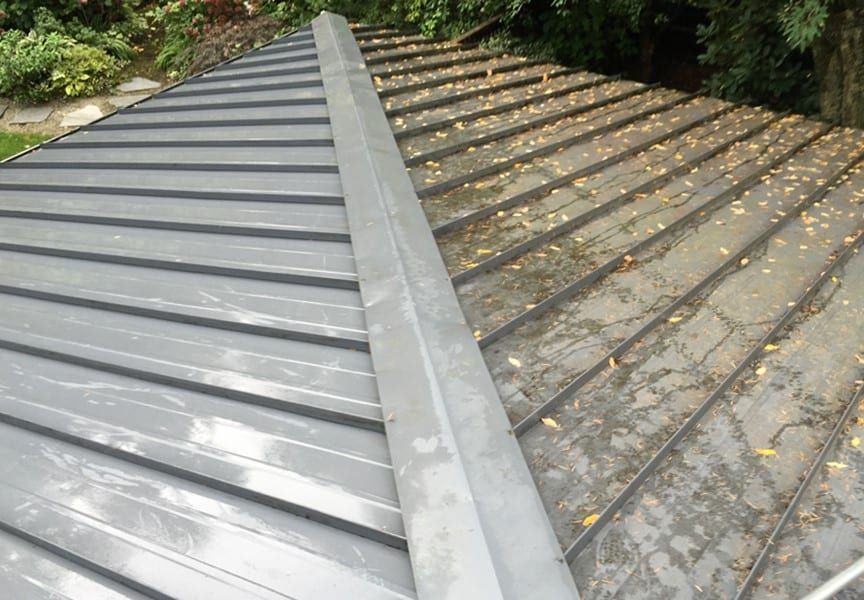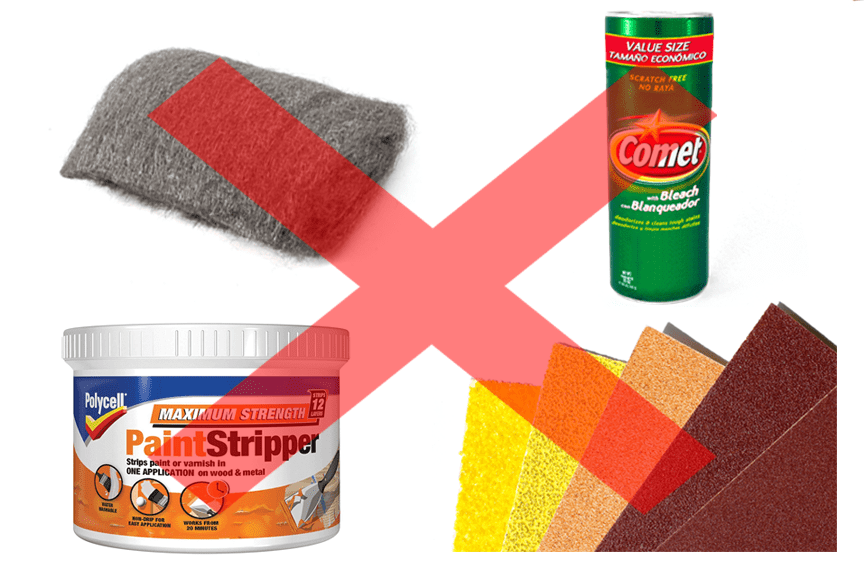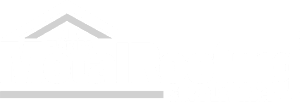Cleaning Your Metal Roof
Metal roofing maintenance, when compared to shingle maintenance, is very minimal. The high-grade finishes on our metal panels are durable, long lasting, and protect the metal for decades to come. However, to maintain durability and its protective properties, cleaning your metal roof should be done on a regular basis to secure, or even extend, its long lifespan. Not only does a good cleaning ensure the life expectancy of your metal roof, but it helps control your energy costs! If your roof is covered in layers of dust and gunk, its solar reflectivity won’t be as great which in turn isn’t saving you as much money.

How often do I need to clean my roof?
A “light cleaning” should be done annually. This cleaning will help keep your roof free of leaves, tree limbs, dust and other elements that may jeopardize the finish of the product.
A “deep cleaning” should be done every 3-5 years, depending on environmental factors and your location. This type of cleaning uses stronger detergents that cuts through some of the tough grime that the annual cleaning can miss (for example: tree sap, oxidation, or other environmental substances). ** You might also consider a deep cleaning after a season of high pollen and allergen build up or significant weather events.
I know your next question…
What entails a “light” or “deep” cleaning?
Here’s a breakdown:
A light cleaning can be as simple as water. Water alone can remove most dust, dirt and some small debris. If water isn’t enough, adding a light mild detergent (NEVER USE BLEACH!) might do the trick. You will mix ¼ cup of the detergent (mild laundry soap, car washing soap, or mild dish soap) per gallon of water. Apply the solution to the surface using a washcloth or soft bristle brush (shown below) to use the lightest touch that will do the job. Let stand for 5 minutes and then rinse with plain water.

A deep cleaning involves a solvent or alcohol-based solution. These solutions work great for tree sap, grease, or other oils and adhesives that may occur. Since most organic solvents are flammable and/or toxic, please advise to the manufacturer’s MSDS (Material Safety Data Sheet). Some may require personal protective equipment (PPE) such as gloves, goggles, protective clothing, etc. Common cleaners for this type of non-water-soluble cleaning include: Isopropyl (rubbing alcohol), Mineral Spirits, Turpentine or VM&P Naptha.
What should I avoid when cleaning my roof?
A question just as important as “What should I use?” … What NOT to use…
It’s crucial to avoid products and tools that will scrape, scratch or grind down the surface or coating and leave other damage to the finish of the metal panels. Abrasive cleaning methods will eventually wear down the finish and leave panels vulnerable to corrosion. Likewise, the misuse of accepted cleaning agents can void any manufacturer’s warranty for the affected surfaces.
No matter what level of cleaning that needs to be done, the following are never ideal for use on coated metal panels: wire brushes, abrasives, steel wood, sandpaper, high-pressure power washers, scouring powders, paint thinners and paint removers.

Who should clean my metal roof?
Essentially anyone can clean your roof, as long as the specifications provided to you by your manufacturer are followed! Before you attempt to clean your metal roof yourself, be sure doing so doesn’t void any warranties.
A professional building cleaning company can be helpful as working on rooftops can be dangerous (especially when you are applying water/chemical to the surface).
Manufacturers know the composition of their products and which chemical cleaning solutions and techniques are best. Neglecting to clean your roof (or doing so incorrectly) can compromise the integrity of the finish and your roofs lifespan. Not only can this threaten the visual appearance of the panels, but it can put you at risk of voiding your warranty.
*These tips for cleaning metal panels are based on general circumstances and get progressively more detailed for different jobs. They should not supersede and are not a replacement of the any metal panel manufacturer’s instructions or warranty requirements, including those provided by Mid-Florida Metal Roofing Supply, Inc.
About Mid-Florida Metal Roofing
Mid-Florida Metal Roofing Supply has been in the business for 16 years. MFMRS manufactures a wide variety of metal roofing products including; Multi-Rib (AG), PBR/R, 5V and Standing Seam in a Galvalume mill finish, as well as, a wide variety of colors to meet all your preferences.
We also manufacture an extensive list of flashing profiles to meet any standard or custom application as needed. We specialize in custom profiles serving a wide variety of needs in the construction industry. Our profiles can also be ordered in custom lengths up to 21ft.
We are committed to producing quality products in a timely manner and pride ourselves with friendly personal customer service.

